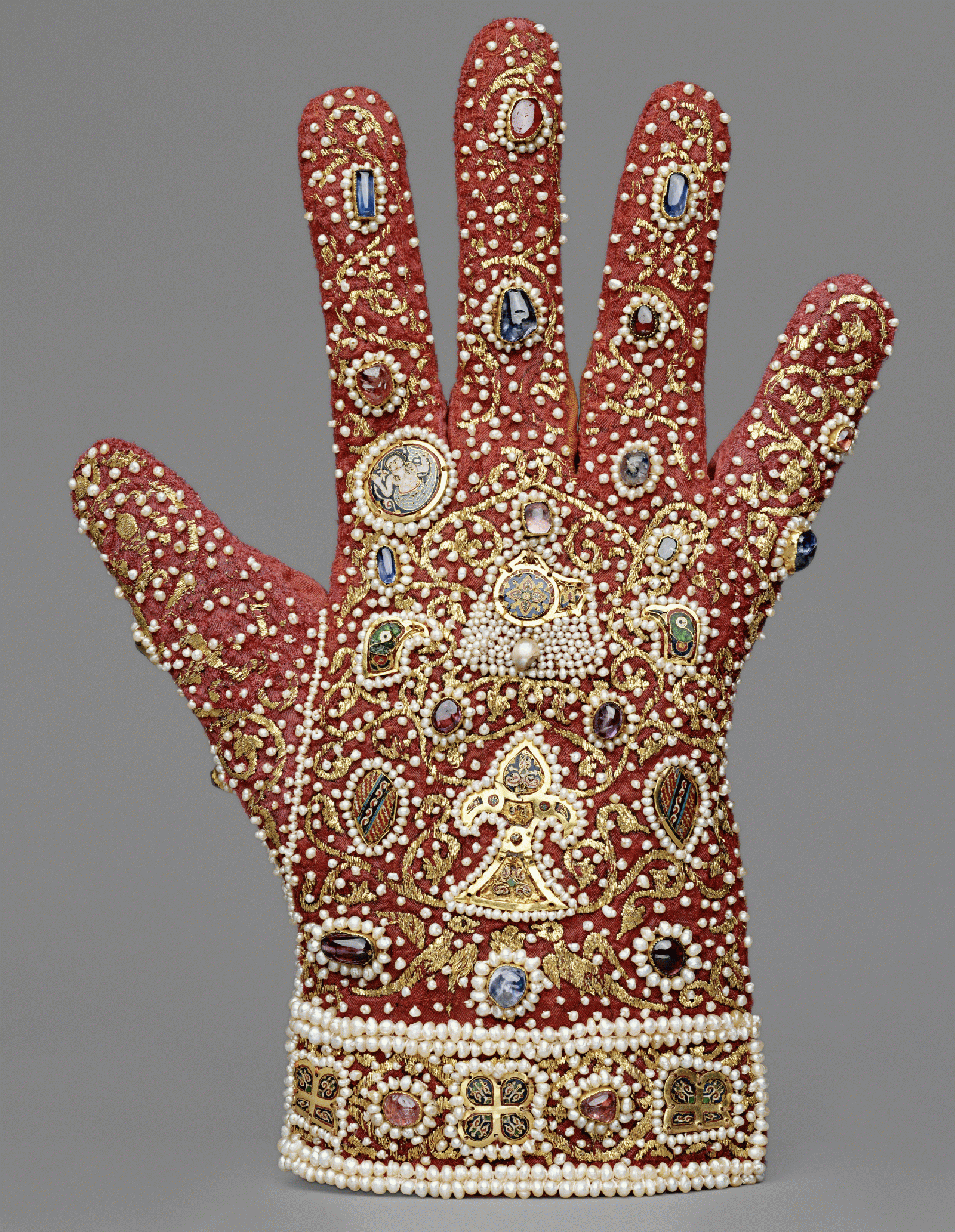Forschung
The King’s Finger, the Mermaid’s Body and the Power of the Sea
Hannah Baader

Glove, right hand, royal workshop, Palermo, before 1220, 26.3 x 27.7 cm. Vienna, Kunsthistorisches Museum, Secular Treasury, Inv.-Nr. XIII 11. © KHM-Museumsverband
This project explores aspects of the transformative power of art by looking at a pair of medieval gloves. Among its particularly rare and precious items, the Weltliche Schatzkammer in Vienna holds a pair of gloves that is generally dated to the second decade of the thirteenth century, produced in workshops in Palermo. It was presumably used for the coronation of Frederick II as Emperor in 1220. The gloves are made from a very thick red silk (shamit) and are adorned with gems, small pearls, several enamels, as well as elaborate embroidery with gold threads. Both gloves show signs of use and mending. They were designed to be highly significant, powerful agents on the royal-imperial body and to ‘embody’ concepts of rulership. The form, material and decoration of the gloves mediate between the king’s body and his claims of naturalized power within Mediterranean ecologies and power relations. On the back of the gloves are pairs of roundels with naked mermaids in cloisonée. The sirens have large naked breasts, long wet black hair falling over their shoulders and dynamically curved fish tails. The three – originally four – hybrid creatures have hardly been addressed by scholars. The mermaids sit on the royal hands almost like rings, and would move together with the royal fingers, acting within Mediterranean systems of power and aesthetics. The project is part of a broader study on the iconology of the sea and the Italian peninsular, 1220–1650.


